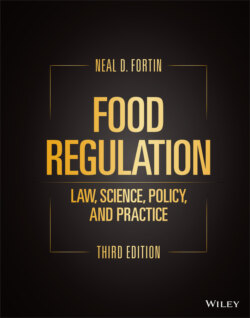Читать книгу Food Regulation - Neal D. Fortin - Страница 204
4.4 TRANS FATS 4.4.1 Background on Trans Fat
ОглавлениеFindings from human feeding studies and epidemiological studies show a positive association between the intake of trans fatty acids and the incidence of coronary heart disease. Walter Willett, professor of epidemiology at Harvard School of Public Health, in 1997 estimated that the use of hydrogenated oils was resulting in 30,000 heart disease deaths per year, representing “the biggest food processing disaster in U.S. history.”35
Most trans fatty acids are created in the hydrogenation of vegetable oil. Hydrogenation is the forcing of hydrogen atoms into the double bonds of unsaturated oil. This saturation of the oil is accomplished with high pressure, heat, and catalysts. Unfortunately, partially hydrogenated fats, along with trans fat, could be found in “everything you love to eat: margarine, commercial cakes and cookies, doughnuts, potato chips, crackers, popcorn, nondairy creamers, whipped toppings, gravy mixes, cake mixes, frozen French fries and pizzas, fish sticks and virtually all fried foods, unless you fry them yourself in un‐hydrogenated oils.”36
